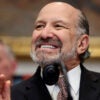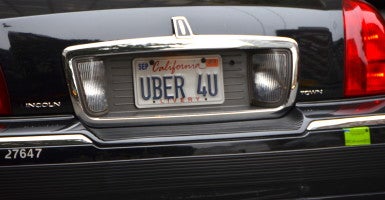There were only two drunk driving arrests last New Year’s Eve in San Francisco, the lowest it’s been since 2009, according to crime statistics from the San Francisco Police Department given to the Ferenstein Wire.
This recent data comes on the heels of a new study revealing that the introduction of Uber’s low-cost service, UberX, reduces drunk driving deaths all over California.
Temple University’s Brad Greenwood and Sunil Wattal put out a new paper which finds that (not surprisingly) cheap taxi-like options make it easier for people to make the decision to call for a ride, when drinking.
If the benefits of Uber in California were extended to the entire country, ridesharing would save billions of dollars and hundreds of lives. The study states that,
“Economically, results indicate that the entrance of UberX results in a 3.6 percent – 5.6 percent decrease in the rate of motor vehicle homicides per quarter in the state of California. With more than 13k deaths occurring nationally each year due to alcohol related car crashes at a cost of 37 billion dollars, results indicate that a complete implementation of UberX would create a public welfare net of over 1.3 billion to American taxpayers and save roughly 500 lives annually”
The overwhelming benefits of ridesharing apps makes it hard for local politicians to keep Uber out of their state or city with regulations.
Last month, New York City Mayor Bill de Blasio faced backlash when he proposed the cap the number of ridesharing cars that could be on the road in NYC. Eventually, he conceded his plans, but it was after Uber put forth a massive public campaign with costly political operatives.
This latest evidence makes the case that Uber isn’t just a battle with local taxis, but a battle against drunk drivers.
Previous attempts at estimating the reduction of the number of drunk driving deaths due to Uber were fraught with controversy. When Uber teamed up with Mothers Against Drunk Driving (MADD) for a previous study, Uber ended up claiming that the conclusions of the research were much more convincing that MADD was willing to admit. There was just too much noise in the data.
This latest study uses more sophisticated statistical analysis and leverages a common economic trick to estimate the effects of Uber.
The decision to enter a market is often political. Uber will start hiring in a city if they know they won’t face overbearing regulation.
This decision is often unrelated to other reasons why there might be reductions in drunk-driving accidents, such as a “city’s population, bar scene, and tougher enforcement,” note the authors.
California is uniquely important in the study because the state has been part of UberX’s rollout since it first began in 2012. This means research can look at what happens when the Uber, or other rideshare companies, can saturate a city with enough of its drivers to change consumer behavior.
California is also large enough so that the economists can estimate the differences in how Uber affects cities within the same state as it slowly enters adjacent markets.
Today, Uber and Lyft drivers are all over San Francisco. As a resident, I can say that using ridesharing apps in the city has just become part of the culture.
Last New Year’s Eve in San Francisco, there were so many Uber and Lyft drivers on the road that users didn’t experience the dreaded “surge pricing”, which, in the past, have cost over 100 dollars for a short ride home.
There was little excuse for anyone to drive on New Year’s Eve with such a plethora of cheap alternatives.
Although the data on San Francisco DUI’s during New Year’s Eve makes it impossible to know if other factors helped cause the reduction in drunk driving, it does make the case that Uber was likely a significant, if not the primary, factor.
Evidently, Uber, Lyft, and other disruptive transportation services are not just saving people time and money, but are also saving lives.































